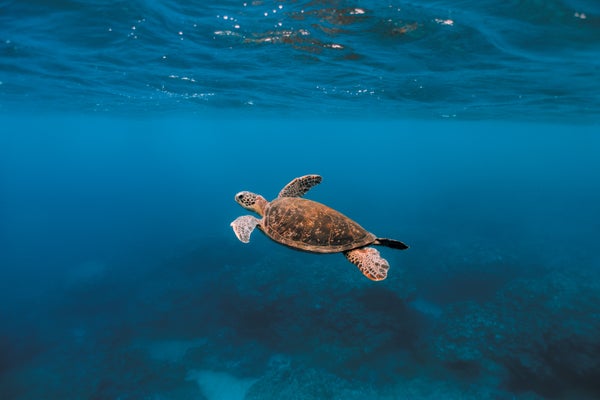November 29, 2024
Thank you for reading this post, don't forget to subscribe!2 min read
The ocean’s digestive system is dictated by picky microbes and precise dynamics of drifting debris
By Susan Cosier

Carbon falls as “marine snow” through ocean layers.
Ippei Naoi/Getty Images
From the sunlit top 200 meters of the sea, plankton carcasses, excrement and molt particles constantly drift toward the depths. As this so-called marine snow sinks, the bits can clump together or break apart, gain speed or sink more slowly, or get eaten up by bacteria. They descend through darker, colder and denser waters, carrying carbon with them and settling on the bottom as biomass.
The oceans absorb billions of tons of carbon every year, a process crucial to account for in climate models. But researchers have long been stumped by how much carbon actually reaches the seafloor—and stays there. To find out, oceanographers are investigating how carbon is eaten, expelled and otherwise influenced as it drifts through what some scientists think of as the ocean’s “digestive system.”
Measuring the rate of carbon storage means scrutinizing the composition of what sinks, how particles stick together and thus drop faster or slower, the decelerating effects of mucus-producing phytoplankton—and even, for a new study published in Science, specific microbes’ dietary preferences.
On supporting science journalism
If you’re enjoying this article, consider supporting our award-winning journalism by subscribing. By purchasing a subscription you are helping to ensure the future of impactful stories about the discoveries and ideas shaping our world today.
“We currently do not have a very good way to connect the processes at the surface with what’s arriving at the seafloor,” says Monterey Bay Aquarium Research Institute oceanographer Colleen Durkin. “We know they’re linked, but it’s been very difficult to observe the mechanisms that drive that connection.”
Recent advances in sensor development, imaging and DNA sequencing are now giving researchers a closer look at the particular organisms and processes at work. By isolating and testing bacterial populations in marine snow, the study’s co-author Benjamin Van Mooy, a researcher at Woods Hole Oceanographic Institution, and his colleagues found that specific microbe populations prefer to eat phytoplankton that contain specific kinds of fatty acid biomolecules called lipids.
Lipids constitute up to 30 percent of the particulate organic matter at the ocean’s surface, so bacterial dietary preferences in a given region could significantly alter how much carbon-containing biomass reaches the seafloor. “If we can start to understand what [microbes] can do, then we can imagine a future where we can start to predict, potentially, the fate of carbon based on the organisms that are present,” says Van Mooy, who was awarded a MacArthur Fellowship in 2024 for his work.
Scientists are also working to document what falls through particular locations over various time frames. Sediment traps reveal a snapshot of certain areas’ marine snow, and Durkin and others are deploying sensors with autonomous cameras to observe sinking particles over a longer period. Seeing the complexity of marine snow distribution, says Rutgers University microbial oceanographer Kay Bidle, “reveals how we can’t necessarily model and understand carbon flux by the very simple constructs and equations and laws that we had before.”

